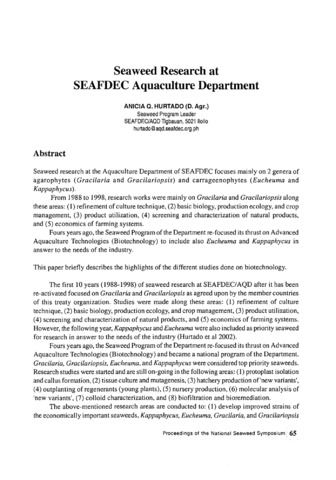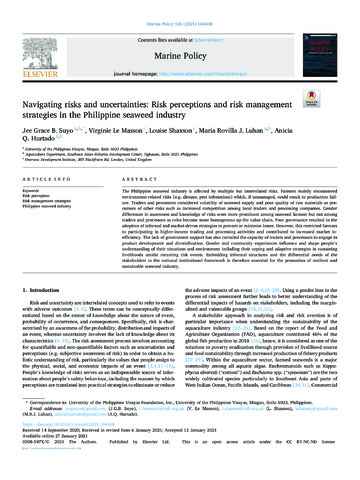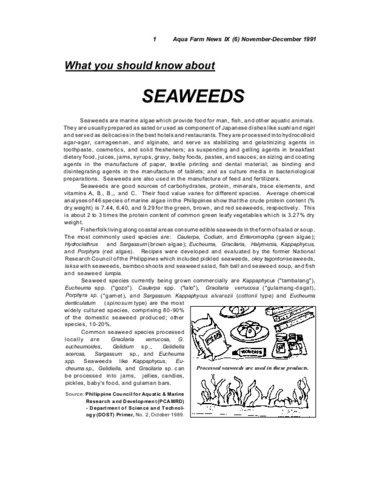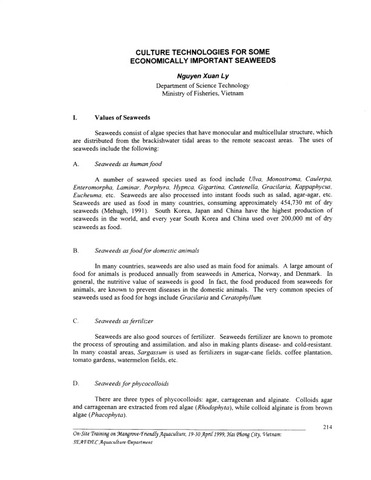Seaweed research at SEAFDEC Aquaculture Department
Share
Abstract
Seaweed research at the Aquaculture Department of SEAFDEC focuses mainly on 2 genera of agarophytes (Gracilaria and Gracilariopsis) and carrageenophytes (Eucheuma and Kappaphycus).
From 1988 to 1998, research works were mainly on Gracilaria and Gracilariopsis along these areas: (1) refinement of culture technique, (2) basic biology, production ecology, and corp management, (3) product utilization, (4) screening and characterization of natural products, and (5) economics of farming system.
Four years ago, the Seaweed Program of the Department re-focused its thrust on Advanced Aquaculture Technologies (Biotechnology) to include also Eucheuma and Kappaphycus in answer to the needs of the industry.
This paper briefly describes the highlights of the different studies done on biotechnology.
Suggested Citation
Hurtado, A. Q. (2003). Seaweed research at SEAFDEC Aquaculture Department. In A. Q. Hurtado & M. R. J. Luhan (Eds.), Proceedings of the National Seaweed Symposium, September 3-4, 2002, Cebu City (pp. 65-68). Cebu City, Philippines: Seaweed Industry Association of the Philippines.
Subject
Taxonomic term
Collections
Related items
Showing items related by title, author, creator and subject.
-
Navigating risks and uncertainties: Risk perceptions and risk management strategies in the Philippine seaweed industry
Suyo, Jee Grace; Le Masson, Virginie; Shaxson, Louise; Luhan, Maria Rovilla; Hurtado, Anicia Q. (Elsevier, 2021-04)The Philippine seaweed industry is affected by multiple but interrelated risks. Farmers mainly encountered environment-related risks (e.g. disease, pest infestations) which, if unmanaged, could result to production failure. ... -
What you should know about seaweeds
Carreon-Lagoc, Julia; Southeast Asian Fisheries Development Center, Aquaculture Department (Aquaculture Department, Southeast Asian Fisheries Development Center, 1991) -
Culture technologies for some economically important seaweeds
Ly, Nguyen Xuan (Aquaculture Department, Southeast Asian Fisheries Development Center, 2000)






